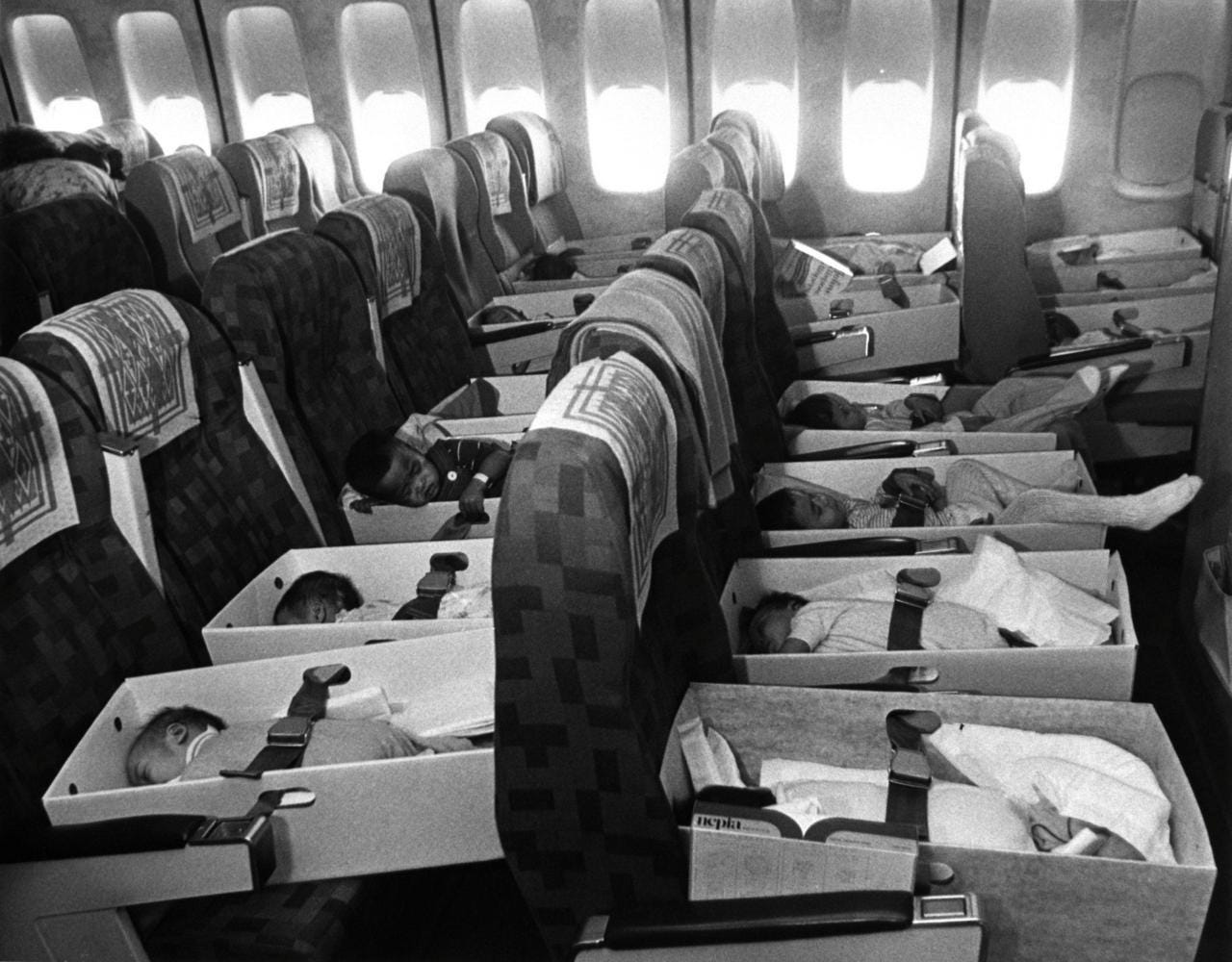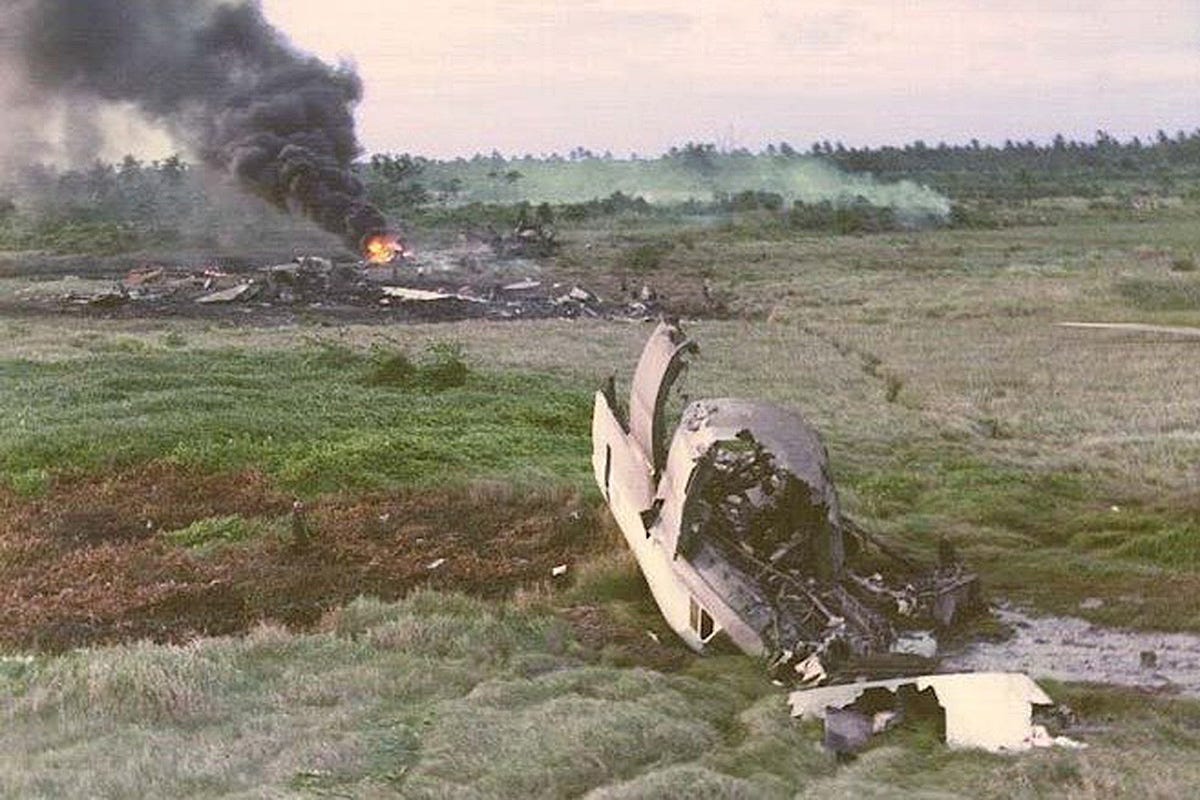Time and again, I find myself shocked to recall that my family had been slated to fly out on the Babylift Flight of April 4. Our plans changed, but I feel forever connected and scarred by the tragedy that took place that day.
In this video I speak about my experience and also read from For the Love of Vietnam: a war, a family, a CIA official, and the best evacuation story never heard:
April 1975
Meanwhile, my mother was scrambling with last-minute preparations. During those first days in April, she stacked the many boxes of household items to be—hopefully—picked up later by the shipping company. To be sure that nothing invaluable was lost, she mailed packages of family mementos, stamp collections, and clothes to her parents’ house in Idaho.
She bought a new large purse that would accommodate the paperwork for the eight of us. As she was organizing it, Chris came downstairs with his fishing line and asked if she could carry it in her purse so that he and his Grandpa could fish once we arrived in Boise.
“Well, sweetheart, my purse will be so full of passports and shot records, I’m sure I won’t have room for fishing line,” she said. “Besides, I think Grandpa will have some there to fish with.”
As Chris walked away, her heart felt heavy at the thought of all the small hopes and dreams that must die with an ending like this one. She felt almost ashamed to think of how much she had longed for a washer and dryer, when now so much more was at stake, especially for those they would be leaving behind.
When she let the two maids go, she gave them a cash bonus, despite the earlier incidents with the missing jewelry. The cook and the driver would stay on to take care of my father for as long as he remained, but she gave each of them jewelry they could sell; a pearl necklace and gold chain for Hoa and a diamond ring to Mr. Bi. She would not be able to help Mr. Bi with his request about placing him in a new job, but she hoped that my father would be able to make something happen, perhaps even offering him a spot on his evacuation list.
Our original departure date was April 4th. We were to fly out with the initial Operation Babylift flight, a project launched by President Ford in an effort to save as many orphans, mostly Amerasian, as possible. Many of these children looked nearly completely Caucasian with blue eyes and blond hair. Left in Vietnam, they would meet with vicious treatment by the North Vietnamese who would see them as terrible reminders of the American presence in their country. The operation would eventually bring some 3,000 children to the United States.
My mother had volunteered to be one of the chaperones since she and Michelle had spent much time with orphans over the previous months. This flight was just one of many that was scheduled. Though the C-5A Galaxy transport was one of the largest planes available, it became apparent that a family our size would be taking seats that the refugee children would otherwise have, so my mother changed our reservations to a commercial Pan Am flight departing the day before.
Our trip to the States, for various harrowing reasons, took two full days, and as soon as we landed, we heard of the fate of the first “too tragic” Operation Babylift plane. Shortly after takeoff, a warning light had come on and the pilot had attempted a wide turn to get back to Tan Son Nhut. Before he could complete the return, the bottom of the airplane was torn apart by an explosion. The gaping hole immediately sucked the air from the cabin, instantly killing some of the 250 orphans and 50 volunteers abroad. Others were spewed into the air, still alive. Wildly out of control, the plane plummeted to the ground, careening nearly half a mile through the thick mud of the rice paddies. As it slid to a halt, water filled the cabin, drowning still more victims.
The tragedy struck those in Saigon like a blow to the heart. People flooded to the airport to lend a hand, to give blood, or to help unload the rescue helicopters who shuttled the injured from the crash site back to Tan Son Nhut.
“As the children were carried off the choppers, you couldn’t tell if they were alive or dead. Nearly every one of them was covered from head to toe with mud . . . they were limp little rags,” one rescue worker said.
At the time it was thought to be the second-worst crash in aviation history, taking more than 200 children and every adult but one. Later it would be discovered that over half of the children did survive, but the losses were devastating nonetheless. My father wrote to my mother that night. He shared his anguish in five words: “What a tragedy! I cry.”
Rumors quickly spread that the crash was caused by Viet Cong artillery fire, but the truth was much more unnerving: it was the result of a simple latch that had not been secured properly. In the stressful atmosphere that was Saigon in April ’75, someone had failed to take the time to follow standard safety checks and it had reaped this disastrous result. What other tragedies might occur as the intensity of the evacuation picked up speed and the press of the enemy armies forced even greater panic?
And worse, how could those still in the country hold on to any hope when it felt as if the country was dying?
It’s difficult to keep remembering such hardship, but it is much worse to forget. To learn more about the Babylift story follow Devaki Ananda Murch on Instagram. She has coordinated exhibits about the event and the history.
Enter to win a free Kindle copy. This month I am giving away 50 copies in honor of the 50th Anniversary. Visit the Goodreads Giveaway to enter for a free Kindle copy of the book.
















Share this post